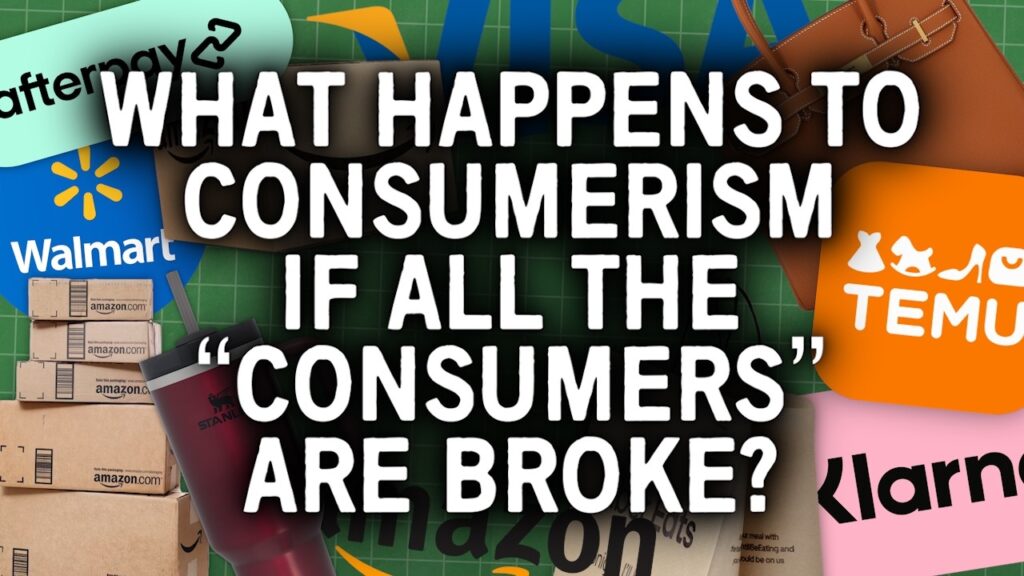Built to Spend: How America’s Consumer-Driven Economy Became Its Greatest Strength and Its Biggest Risk

If you’ve ever felt like your paycheck disappears the minute it hits your account, you’re not alone—and there’s a reason for that. America’s economy isn’t just powered by consumer spending—it’s built on it. And while that system has helped create incredible wealth and innovation, it also comes with serious risks that we don’t talk about enough.
Let’s start with the big picture: consumer spending makes up 69% of the U.S. economy. That’s almost double China’s 38%—and they have five times our population. Even the European Union sits lower, at 51%. We spend more than anyone else in the world, by a long shot.
This isn’t accidental. After World War II, the U.S. leaned hard into consumerism to keep its industrial machine running. Policies were designed to stimulate spending, not saving. Modern advertising was born. Shopping malls and credit cards followed. And because we’d industrialized early—while much of the world was still rebuilding—we got a massive head start. Consumerism became not just an economic engine, but a way of life.
But that model is now showing cracks. Savings rates are at historic lows, and high-interest consumer debt is above $1 trillion—and that’s not even counting mortgages, car loans, student loans, or medical debt. In fact, the bottom 20% of American households spend $727 more than they earn every year. That means debt isn’t just for extras—it’s covering basic needs like housing and transportation.
And here’s the kicker: debt isn’t just a financial issue—it’s a control mechanism. People who owe money are less likely to demand raises, switch jobs, or advocate for better benefits. They’re more likely to work unpaid overtime just to keep up. Add in subscription-based services and auto-pay bills, and many people don’t even notice how much they’re spending—until it’s too late.
Housing is the biggest piece of this puzzle. In places like New York City, nearly 80% of households are considered “housing burdened”, spending over 30% of their income just to keep a roof over their heads. Then there’s transportation—cars are a necessity for most Americans thanks to decades of suburban sprawl and car-centric city planning. Owning a car isn’t optional in much of the country—it’s mandatory. And it’s expensive.
Now, I don’t want to ignore the benefits. Consumerism gave us the modern conveniences we rely on—refrigerators, washing machines, smartphones. These have improved quality of life dramatically. But we’re hitting the limits of what more consumption can do. Economists call this the law of diminishing marginal utility—the idea that each additional item gives us less satisfaction. And when people spend beyond their means to chase that satisfaction, financial strain follows.
What’s even more concerning is how much our economy now depends on high-income earners. The top 10% drive demand for luxury and non-essential goods—the high-margin stuff that keeps many companies profitable. That means a growing chunk of our economy relies on the spending habits of the wealthy, not the financial health of the average American. And instead of lifting up lower-income earners, businesses are increasingly focused on catering to the top-tier customers.
This creates a dangerous imbalance. During the pandemic, stimulus checks temporarily boosted low-income spending, but that bump has faded. Now, wealth inequality is widening, and the broader economy remains tethered to a small group of people. That’s risky—because if those top earners pull back or face a downturn, the impact ripples across the entire system.
And make no mistake: a consumer pullback can trigger a recession. We’re already seeing warning signs—rising interest rates, shrinking supplier competition, and high corporate consolidation make it harder to shift course. Fewer companies dominate more of the economy, and they have a vested interest in keeping the spending cycle going.
It’s a tricky paradox. America’s role as the world’s largest consumer market gives us incredible leverage in global trade. But it also ties our economic stability to a pattern of ever-increasing spending—even as the cost of living rises and household debt piles up.
So where does that leave us?
It leaves us needing to rethink how we define financial health—not just in our households, but as a country. We need policies that support saving, not just spending. We need affordable housing, smarter transportation infrastructure, and financial systems that reward sustainability over endless consumption. And individually? We need to become more aware of where our money is going, and why.
Because when the entire economy depends on people buying things they can’t afford, it’s not just a personal finance issue—it’s a national one.
All writings are for educational and entertainment purposes only and does not provide investment or financial advice of any kind.





